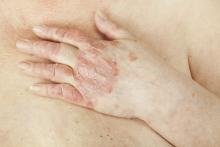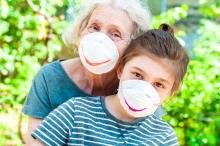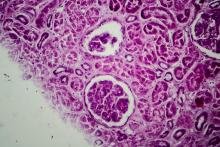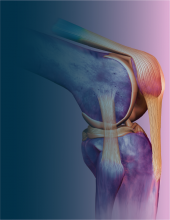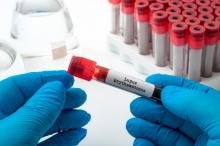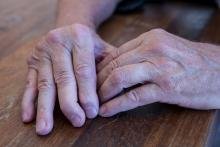As an "important challenge for diagnosis and treatment" is characterized the treatment of lupus, in the scientific document that includes the first clinical practice guidelines for the treatment of said disease. The document is a publication by GLADEL, the Latin American Lupus Study Group (Grupo Latino Americano De Estudio del Lupus), and PANLAR (Liga Panamericana de Asociaciones de Reumatología).
Patients with lupus in Latin America present special problems that must be considered when developing therapeutic guidelines, which is why this was also a fundamental aspect of the development of the investigation in which specialists from different countries were involved.
Enrique Soriano, PANLAR’s president, explained that two years ago the organization held a strategic planning meeting and adopted the mission to, “by the year 2020, be the main creator of guidelines for treatment practices and recommendations for Latin America”. In this connection, he added, “we started to work in the production of recommendations and consensuses”.
The first three on which they worked on concerned chikungunya, biosimilars and the guides or recommendations for the treatment of systemic lupus erythematosus (LES).
“For the lupus guidelines, the driver was the very strong presence of the GLADEL group, which has performed a lot of research in Latin America and provides an important base in order for these recommendations to have value in the region”, said Soriano.
THE PROCESS
Two independent teams made up of rheumatologists with experience in the treatment of lupus and methodologists held an initial meeting in Panama City in April 2016. At the same, a list of PICO questions (Population/Patient, Intervention, Comparison and Outcome) was selected for the most common clinical problems in Latin American patients with lupus. Afterward, evidence was analyzed and presented in a standardized template summary. The classification of the recommendations’ assessment, development and evaluation of the guideline system, “was based on the GRADE methodology (Grading of Recommendations Assessment, Development and Evaluation), whereby different PICO questions are posed to find the best evidence available in the literature. This involved experts of a more senior generation and younger participants”, said José Gómez Puerta, internist and rheumatologist, head of rheumatology services at the Clinic Hospital, who participated in the preparation of these guidelines.
“From there, with the support of a methodology group coordinated from Argentina, the final questions were formulated, and the evidence gathered. As a second step, in a face to face meeting in Washington DC, on November 2016, the work teams evaluated the available evidence and issued the recommendations. What followed was a process of publishing of two manuscripts in two important international indexed international journals”.
Main findings were presented in nine sections (related to organs/systems) with the inclusion of a focus on global treatment, and especially including a section on the regional problematic.
The ethnical heterogeneity and socioeconomic level of the Latin American population were especially taken into account and, in this context, explained Gómez, “the guidelines we are used to using, be them American or European, did not include Latin, mestizo or Hispanic patients”. These were differentiating aspects of our guidelines. “Among the main principles that we have raised, the importance of the integral handling of lupus patients, of a base medication that all of them should receive, such as antimalarials, the importance of considering all comorbities present in these patients, such as osteoporosis, cardiovascular diseases, propensity to infections, stand out”. The different existing pharmacological options for the treatment of musculoskeletal, mucocutaneous, renal, cardiac, pulmonary, neuropsychiatric, hematological manifestations and for the antiphospholipid syndrome were evaluated. Likewise, the purposes of the main therapeutic options (that is, glucocorticoids, antimalarials, immunosuppressive agents, belimumab, rituximab, abatacept, plasma exchange, low-dose aspirin and anticoagulants) were summarized in each section, says Mario Cardiel (from the Clinical Research Center of Morelia, Mexico), one of the contributors in the methodological aspects of the guidelines.
To improve the dissemination among regional doctors and those interested in the clinical practice guidelines, the same were translated from Spanish to Portuguese under the supervision of several of the coauthors of the original work. There are now final versions that may be released through PANLAR.
THE BEST EVIDENCE
“We spared no time or efforts in searching for the best possible evidence. We were out to achieve the best existing guidelines”, stated Gómez.
The document states that, in every case, the benefits and damages, the certainty of the evidence, the values and preferences, the viability, acceptability and equality problems were evaluated. In producing the recommendations, special emphasis was awarded to ethnical and socioeconomic aspects. It also states that, even if the guidelines were prepared for Latin American lupus patients, the same may be applied to similar contexts.
In addition, Soriano highlighted the importance of pursuing remission as the treatment’s purpose, that is, freeing patients of symptoms. “That, while maintaining the disease, the patients go through life as if free from it, without symptoms or discomfort caused by the disease”.
“A very exhaustive review of all existing treatment possibilities has been conducted. Medication has been compared and the guidelines state which ones should be used primarily and secondarily in the treatment of the disease”, he added.
Gómez emphasized that these are guidelines that qualify as “transversal”, in which two generations of Latin American experts on lupus participated, from pediatricians to practitioners for adults, including experts from all of PANLAR’s member countries. They were also reviewed by patients’ representatives.
“These publications were sent to the most important rheumatology journals, from the point of view of dissemination and academic achievements, this is motive for pride”, he concluded.
THE GUIDELINE
The content of the guidelines (1) is based on the five general principles stated below:
1. Treatment must be individualized; specialists and general practitioners must work jointly and the active participation of the patients and their family in the general therapeutic plan must be emphasized.
2. The therapeutic purpose must be to achieve and maintain remission or the low activity of the disease, as soon as the diagnosis is made and for the greatest possible time.
3. Treatment must include photoprotection, infection prevention, metabolic syndrome and cardiovascular disease; psychological assistance and advisory on pregnancy.
4. All lupus patients must receive antimalarials, except those who refuse or have absolute contraindications to take them.
5. Glucocorticoids, if clinically necessary, without regard to the patient’s disease manifestations, must be prescribed in the lowest doses and for the shortest amount of time.
The discussion section also states that the treatment of lupus in Latin America remains “a great challenge” despite the guidelines published concerning the management of this disease.
Differences in epidemiology, sanitary resources, socioeconomic problems were considered, and priorities were focused for the development of these guidelines.
“Although these guidelines consider regional limitations, the inclusion of alternative approaches to adapt treatments does not preclude the task of providing physicians with the latest advances in the field. This was a great advantage of this work, as highlighting these advances provides a valuable base for the future requirement of obtaining government approval for new drugs in these countries”, is stated in the text.
The publication of these guidelines should be followed by the commitment of the health system and the execution by specialists, both important steps towards the improvement of the treatment of lupus in Latin America and countries with low
A la publicación de estas guías debe seguirle el compromiso del sistema de salud y la ejecución por parte de especialistas, pasos importantes hacia la mejora del tratamiento del lupus en América Latina y los países de ingresos bajos y medios.
EDITORIAL
The article with the guidelines was published by the Annals of Rheumatic Diseases (ARD), the rheumatology journal with the current highest worldwide impact. In an editorial in the same issue the one in which the guidelines were published, recommendations on lupus formulated during the last decade (2008-2018) are analyzed (2) and the way in which they can help integrate evidence based medical practices to clinical practice.
These guides, based on evidence, “can help professionals and patients make decisions concerning the most adequate medical attention, and ease the teaching of students, doctors and patients”, is stated in the text.
The editorial spotlights the recommendations for the treatment of lupus issued by GLADEL-PANLAR. “The authors claim that, even if there are guidelines for the treatment of lupus, there is little evidence to support specific therapies for Latin American patients”. It later adds that the impact of racial / ethnical origin and socioeconomic status have been considered, encompassed as well in the response to treatment. “Drug variables, such as cost and availability, were also considered, since they can affect and are relevant to decision making”.
“In our opinion, these recommendations embody a regional effort to develop guidelines driven by the ideal of better penetration in the community”.
The editorial likewise makes some observations: “The evidence presented is, in our opinion, biased towards (the few) randomized controlled trials as opposed to observational studies in lupus, which is a limitation, as valuable real life data could have been ignored”.
Asked about such point, Dr Bernardo Pons-Estel, coordinator of the GLADEL group, mentioned that the assessment by the authors of the editorial es “absolutely incorrent” and that, “unfortunately, when issuing their opinion, they did not review a first publication of our guidelines (3), entirely dedicated to the methodology, where it is stated that for evidence concerning benefits and damages, randomized controlled trials as well as observational studies were evaluated and taken into account”.
The authors of the editorial, furthermore, suggested that experience has proven “that doctors that use recommendations also search for practical information, such as work definitions, to define treatment or receive guidance on drug dosage or duration of use. The inclusion of said information in subsequent revisions could improve the usefulness of these recommendations”.
Despite these observations, the editorial is likewise clear in stating that the rheumatologists’ community welcomes the efforts of this active groups of Latin American experts and expects to see the dissemination and use of the recommendations in the region, “together with studies that measure their impact in the improvement of the quality of care for patients with lupus”.
“At PANLAR we are convinced of the importance of creating treatment guidelines adapted to our context, with the best available evidence, which may include observational studies, which were in fact analyzed in our document”, stated doctor Mario Cardiel.
For doctor Soriano, “PANLAR and GLADEL have demonstrated with these guidelines that with the effort and dedication of the groups dedicated to studying different diseases, such as lupus in this case, and the financial support provided by PANLAR, rheumatologists in the region are capable of creating products of a high scientific and academic level. It is now up to us to disseminate and apply these recommendations for the wellbeing of our patients”.
References
- Pons-Estel BA, Bonfa E, Soriano ER, et al. First Latin American clinical practice guidelines for the treatment of systemic lupus erythematosus: Latin American Group for the Study of Lupus (GLADEL, Grupo Latino Americano de Estudio del Lupus)-Pan-American League of Associations of Rheumatology (PANLAR). Ann Rheum Dis. 2018;77(11):1549–1557. doi:10.1136/annrheumdis-2018-213512
- 2008–2018: A decade of recommendations for systemic lupus erythematosus . Boumpas DT, et al. Ann Rheum Dis 2018;77:1547–1548. doi:10.1136/annrheumdis-2018-214014
- Cardiel MH , Soriano ER , Bonfá E , et al Therapeutic Guidelines for Latin American Lupus Patients: Methodology. J Clin Rheumatol 2018;24:1.doi:10.1097/RHU.0000000000000662


















































































